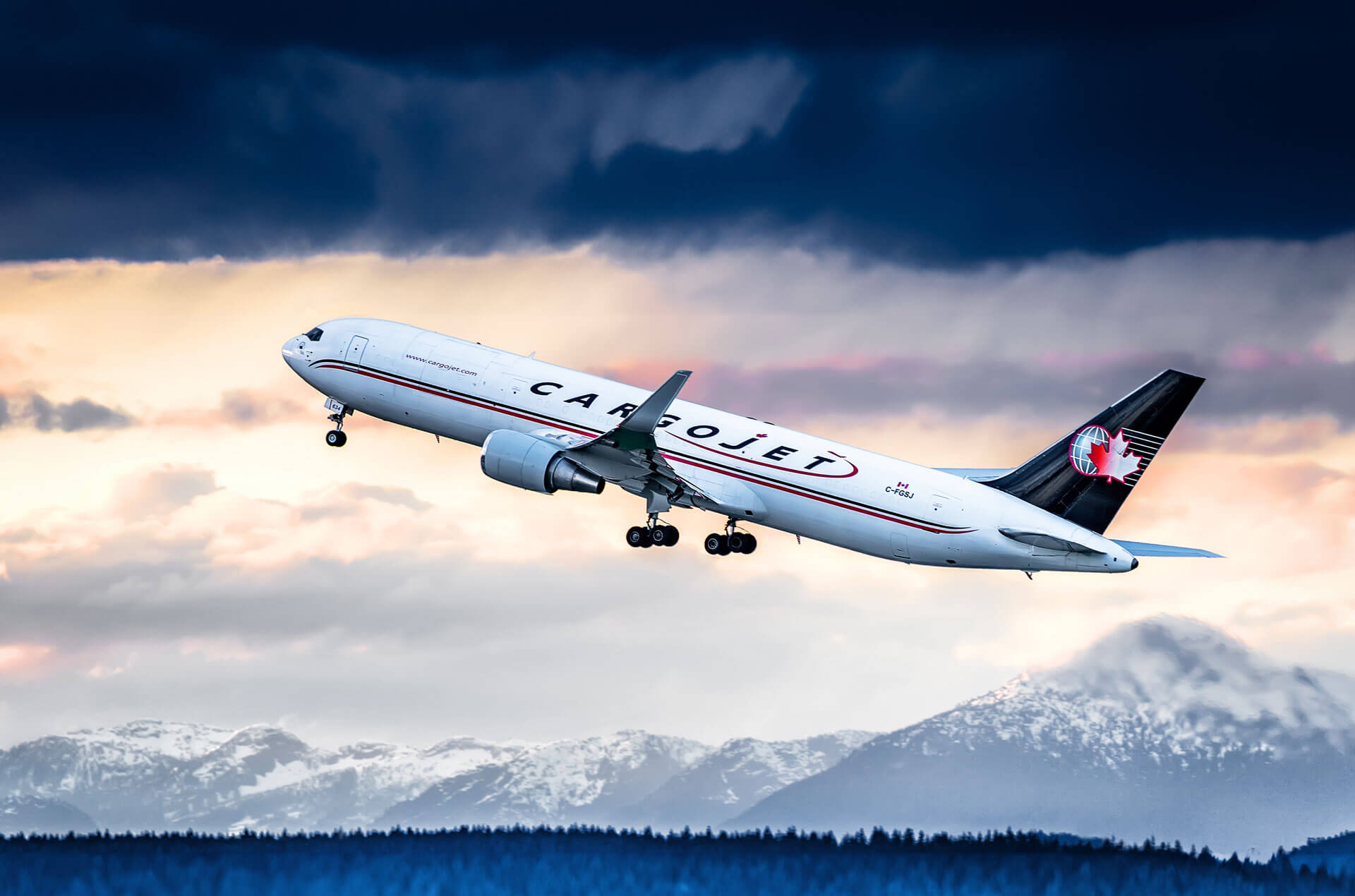Estimated reading time 18 minutes, 17 seconds.
After a general boom through the Covid-19 pandemic and into 2022, the International Air Transport Association (IATA) reported that North American air cargo carriers had a 2.2 per cent decrease in cargo volumes for September 2023. Measured in the industry metric of cargo tonne-kilometres (CTKs), the weaker performance continues a trend that carriers have been noticing since the beginning of 2023.
“The Covid years into 2022 were significant growth years globally for the air cargo industry,” said Jamie B. Porteous, chief strategy officer at Mississauga, Ont.-based Cargojet.
“Consumer demand increased significantly, allowing us to double the size of our business in 2022,” he continued. “Then, the global air cargo industry saw a surprising softening in the fourth quarter of 2022, when we’d historically see a spike in volumes. [2023 was] challenging, not only for our industry, but with the entire global economy being reset. Interest rates are higher, inflation and lower consumer spending all add up to lower overall demand.”

He did note, however, that demand in the second half of 2023 was “a bit stronger than in the first half.”
Throughout the pandemic, airlines were adding dedicated freighter aircraft or ramping up cargo capacity in the bellies of their passenger aircraft, so supply has increased globally to the point where it has outpaced current demand, Porteous explained.
Cargojet, which lays claim to more than 90 per cent of the domestic overnight cargo business in Canada, operates a total of 41 all-cargo aircraft, including Boeing 767-200ERF and Boeing 767-300ERF models, as well as 757-200ERF freighter aircraft.
Porteous explained the benefits of the types: “They fit the markets we operate, but they are also unique in that the flight deck is identical in both aircraft. There is just one type rating [for pilots]. Operationally, it is very effective for us from an efficiency and cost standpoint.”
Cargojet was founded in 2002 as a dedicated cargo operation. Its primary domestic hub is Hamilton, Ont., where the company has invested over $100 million into its facilities, including a 70,000-square-foot sorting facility. In addition, Cargojet serves 15 other Canadian cities across Canada, connecting over 80 flight legs.
Revenue generation can be divided into three buckets: domestic overnight cargo; ACMI leasing (where Cargojet provides aircraft, crew, maintenance and insurance to a lessee in return for payment on block hours operated); and charter and international business.
As part of its global expansion of air cargo services, including in Canada, Porteous said Cargojet announced a major capital expenditure program at the beginning of 2022.
“It was just over a billion dollars for 757 and 767 freighters and most have already been delivered.”
Remaining as part of that were four Boeing 777-200Fs (down from an initial order for eight), with deliveries slated for late 2024 and 2025. However, in a Jan. 15, 2024 statement, Cargojet’s executive chairman Ajay Virmani confirmed that the company has decided to “exit our commitments for the four remaining B-777 aircraft, while continuing to flex our B767 fleet to accommodate our organic growth strategy.
“Cargojet has substantially completed the operational groundwork to be able to enter the B-777 market should economic conditions change,” he continued, “[and has] retained the rights to provide the optionality for future conversion slots.”
Moreover, Cargojet has four surplus 757-200 freighters. The carrier noted that it “is exploring options such as dry lease or ultimate sale of these aircraft.” The company also owns the feedstock for two Boeing 767s, and intends to convert the aircraft into freighters “as the demand begins to recover over the next couple of years.”
As far as pilots are concerned, Porteous said Cargojet hired dozens of pilots laid off by Air Canada and WestJet during the pandemic. Now, with passenger airlines ramping up again globally, there is a shortage of pilots in the air industry internationally.
“We anticipated that and got ahead of the curve,” he reported. In late 2023, Cargojet had “about 40 [pilots] in various stages of training, awaiting line checks,” said Porteous.
Currently, Cargojet employs more than 400 pilots.
Porteous said the carrier manages the block hours on each aircraft very precisely, shifting planes to domestic or ACMI routes as needed to manage operating costs and protect margins. Annually, the operation as a whole flies about 75,000 block hours.
“The heaviest demand is from Ontario or Quebec to Western Canada, with connections in Winnipeg,” he explained. “Hamilton to Vancouver is our heaviest route, with Calgary being the second-most in demand. Our domestic business overall has fared better than some other industries. Domestic customers use us on every lane. They tell us the capacity they need and pay for it whether they use it or not, so these are guaranteed customer contracts with minimum volume commitments.”
Cargojet moves domestic overnight air cargo for all major couriers, freight forwarders, and e-commerce providers, including UPS, DHL, Canada Post/Purolator, and Amazon.
Finally, Cargojet offers ad-hoc charter services using aircraft pulled from the domestic and ACMI fleet when they are not working — typically on weekends and down time during the day.
“We do all types of charters,” said Porteous. “We did a tour for a rock festival, Lollapalooza South America. We were the first cargo airline to do charters to Maui after the wildfires — for that, we needed an exemption from FEMA [the U.S. Federal Emergency Management Agency] for cabotage. We have flown from Halifax to Australia for Canadian military equipment and brought military food rations to Cyprus.”
He said that prior to Cargojet, there was no reliable dedicated cargo carrier in Canada.
“We thought if we made the investment, we would be very successful,” concluded Porteous. “If you ask me what is the No. 1 priority of our customers and why have we been so successful… it’s because of our track record for on-time performance and reliability. We earn our customers’ business each night and we have a team of dedicated professionals who care and are committed to Cargojet’s success. In Q2 2023, we arrived within 15 minutes of the scheduled time, 99.7 per cent of the time. That is crucially important to our customers.”
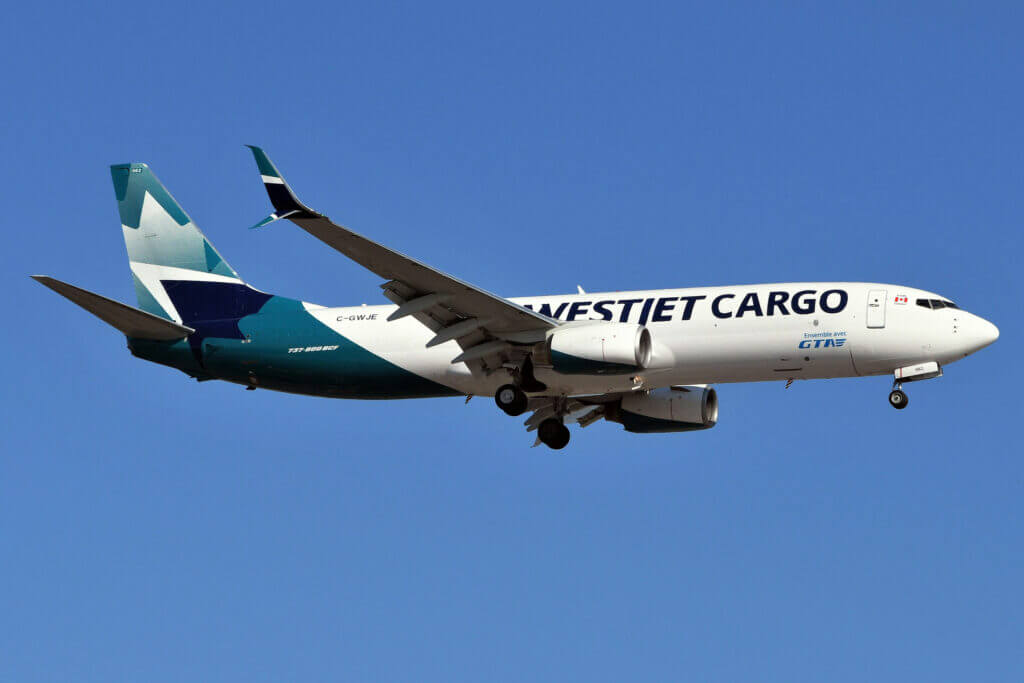
Operational Economies of Scale
On April 20, WestJet’s new cargo division flew its first flight with a dedicated 737-800 converted freighter. The newly launched WestJet Cargo now has a fleet of four all-cargo aircraft with maximum payloads of 23 tonnes each, complemented by the passenger airline’s belly cargo capacity.
“We use the 737-800s to fly point-to-point and to optimize our three hubs in Calgary, Vancouver, and Toronto, to feed and de-feed the 180 other aircraft we have,” explained Kirsten De Bruijn, WestJet’s executive vice-president of cargo. She joined the company in May 2022 and brings 15 years of international air cargo experience to WestJet, most recently with Qatar Airways Cargo.
“We at WestJet are holding our cargo volumes close to [2022 numbers],” she told Skies during an interview in the fall of 2023. “We are down about 2.6 per cent of volume year-over-year (YOY), September year-to-date.”
She explained that WestJet made the decision to launch a dedicated cargo division in 2021, making plans to acquire its four converted freighters.
“Four freighters don’t have the economy of scale, but we also have 120 737s [across our passenger network]. So for us, being a Canadian operator, we have the infrastructure – pilots, maintenance, and parts. That’s how we can offer an affordable product having four dedicated freighters. I have the operational economies of scale, so we can provide a competitive cost for Canada and North America.”
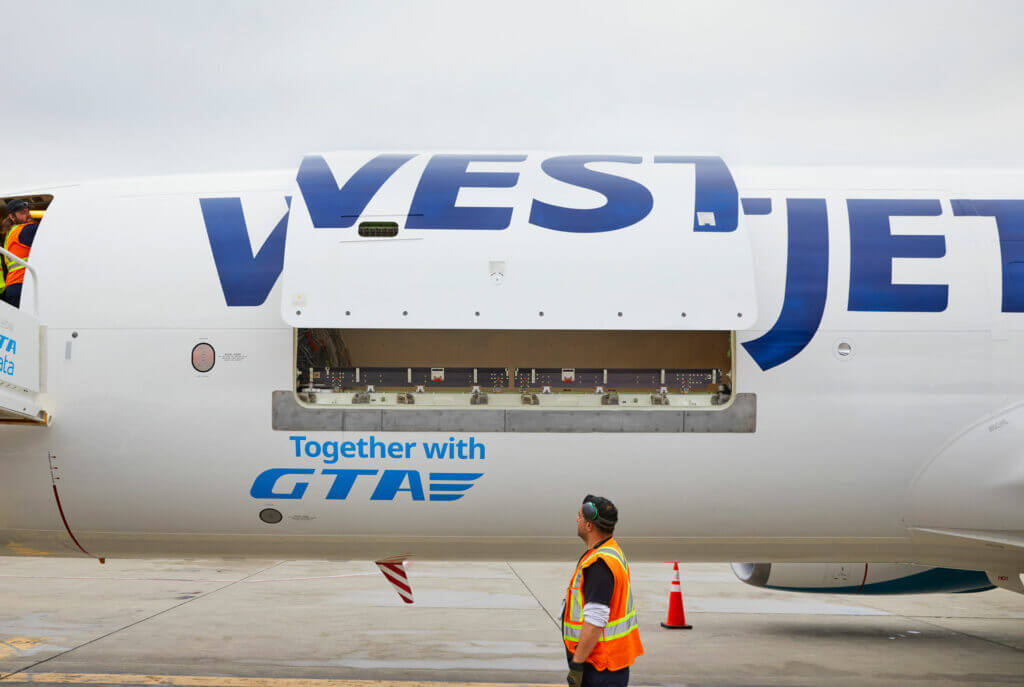
Activity began inching upwards towards the end of 2023, reported De Bruijn. She had predicted that the fourth quarter of 2023 would see a slight increase of charters and e-commerce, but she didn’t expect it to be significantly higher than 2022. In the meantime, WestJet Cargo has been busy servicing the Calgary-Toronto corridor, with the Cuban market coming on strong.
“We have a good relationship with Cuba through our acquisition of Sunwing Airlines, the biggest airline and tour operator into Cuba,” said De Bruijn. “We are aiming to be one of the main providers of Cuban imports, with activity driven by tourism.”
WestJet Cargo partners with other international airlines heading to Asia, facilitating the shipment of East Coast seafood. It brings perishable food to Canada from Miami; domestically, it moves many perishable products across the country, including a great deal of product destined for Canadian pet stores.
In the Halifax market, buying power is still evident from Asia.
“We will see a surge in business for Chinese New Year,” predicted De Bruijn. “We have a great team of cargo professionals that targets any opportunity we see in the market.”
As for the future, “we have to normalize now and see where the new trends lie,” said De Bruijn. “We will need another year. I think the fourth quarter of 2024 will see us back to normal business. Then I will be able to predict what the market will look like. We might stay with four [dedicated cargo] aircraft or we might go to 10. We are trying not to rush that decision with the current economic uncertainty.”
She said factors such as the exchange rate play a huge part in the business model.

Meanwhile, she is very proud of her 80-member team at WestJet Cargo.
“We hired the best people in the industry to move to Canada. As a country, we allowed these cargo experts to come in, and we’ve created the brand around these people,” said De Bruijn.
“Now, we have the time to overhaul the business unit, look for new technologies and efficiencies, and improve the service levels to make sure that when we’re really busy, we are ready to do it better.”
Northern Niche Operator
In Yellowknife, Mikey McBryan said Buffalo Airways has seen its cargo operations explode since the pandemic. Headquartered in Hay River, N.W.T., the company’s main hangar is in Yellowknife, with maintenance based in Red Deer, Alta., and the cargo hub in Edmonton — all supported by a number of smaller satellite bases.
“Northern cargo is as busy as I’ve ever seen it,” said McBryan, the company’s general manager. “All sectors of what we do, from firefighting to small passenger charters to large cargo charters, it’s been fairly busy. Our different revenue streams keep us busy at all times.”
At Buffalo Airways, “every airplane can be a cargo plane,” from its Douglas DC-3s down to the smallest Cessna 185 on floats. The company operates an eclectic fleet of some 55 aircraft, featuring a range of types to facilitate passenger charters, cargo, and aerial firefighting. Most recently, it acquired its first jet aircraft, a Boeing 737-300 that came online on Oct. 26.
McBryan said the jet is being used on “pavement to pavement” routes, with the Lockheed Electra completing cargo deliveries to gravel runways.
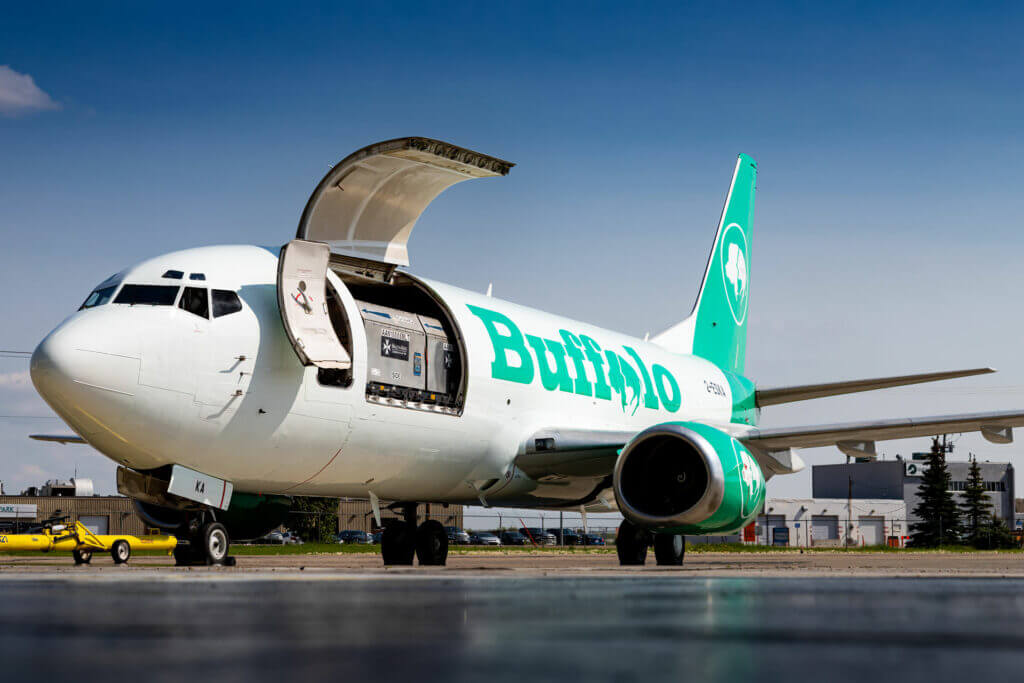
“The [Boeing] just came out of a heavy maintenance check and has done around 15 hours so far,” he reported at the end of October 2023. “We have new crews, upgraded from the Electra, and luckily some had prior experience with the 737-200.
“Our jet hauls 40,000-plus pounds of cargo, depending on fuel,” McBryan continued. “It is a huge savings to the customer — customers look at price per pound, that’s all they care about. To the 80 per cent of the population serviced by a paved runway, it’s the 737. So that makes the Electra even more efficient when we use it.”
Efficiency is what it’s all about when it comes to cargo operations, especially in the North, said McBryan.
“We are turning 54 in May [2024],” he commented. “It took us 54 years to get a 737. I went to business school and none of it was really applicable [to unique northern flying operations]. When you look at our diverse fleet, it’s not because we want this many types, it’s because our customers need them. The next aircraft will be dependent on the customers. Once you lose sight of the customer, you’re done.”
McBryan said the holiday cargo season is always chaotic, right from Halloween through to Christmas Eve.
“It builds up to the 24th and then completely drops off until after New Year’s. We have a different slowdown during ice road season, with the roads generally open from the end of January to March. We are a bit slower then, because the bigger diamond mines use the ice roads. But if the ice road goes out early, there is a big push [for air cargo] at the end.”
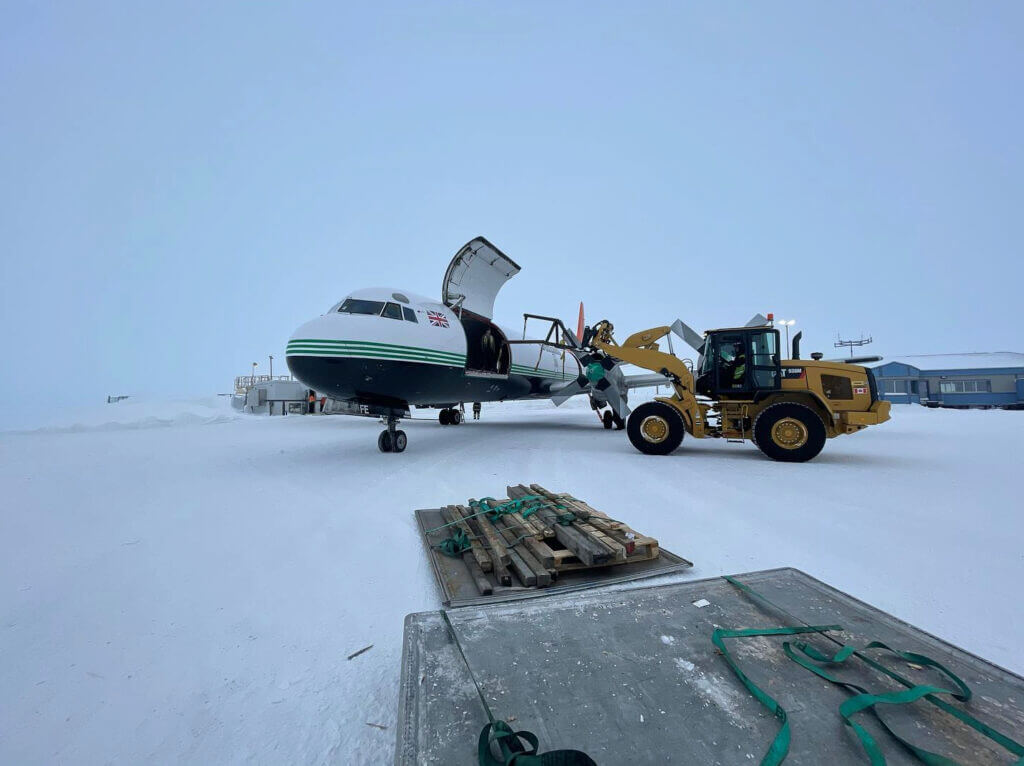
The Buffalo Airways fleet flies about 5,000 hours per year, estimated McBryan.
“We are niche. We fly crazy hours when we are firefighting. From a pure cargo standpoint, it’s mostly related to hard minerals, gold and diamonds, at the mines north of Yellowknife.”
Buffalo’s busiest cargo run is the valley route, said McBryan, from Yellowknife up to Tulita, Deline, and Norman Wells in the N.W.T., and on to Cambridge Bay, Nunavut, with stops at smaller communities along the way.
“With charter, you go where the action is,” he said. “If a community is building a school, you are flying supplies there non-stop. Cambridge Bay and Norman Wells are the most frequent and, of course, Yellowknife, too.”
When asked if economic factors impact northern cargo as much as the south, McBryan said no.
“Here in the north, you have to order everything. There is no other way. So, the changes [related to the economy] are less dramatic. We are not as affected as the big carriers.”
Another factor that sets Buffalo apart from other cargo operators is the door-to-door service it provides. Through Buffalo Air Express, a driver can pick up an item in Edmonton, deliver it to the airport where it’s flown to Yellowknife on a company plane, and then delivered by another Buffalo truck.
“We do the first and last mile on most of our freight, including using agents in different communities,” said McBryan. “We mostly do door-to-door service.”
The work Buffalo does can’t be replaced by technology, either.
“Everyone wishes it can, but you need that person to put that box on a plane and someone else to move it,” concluded McBryan. “Here, we know the name of the driver picking up the freight. Technology makes it smoother, but people can’t be replaced when it comes to moving cargo.”
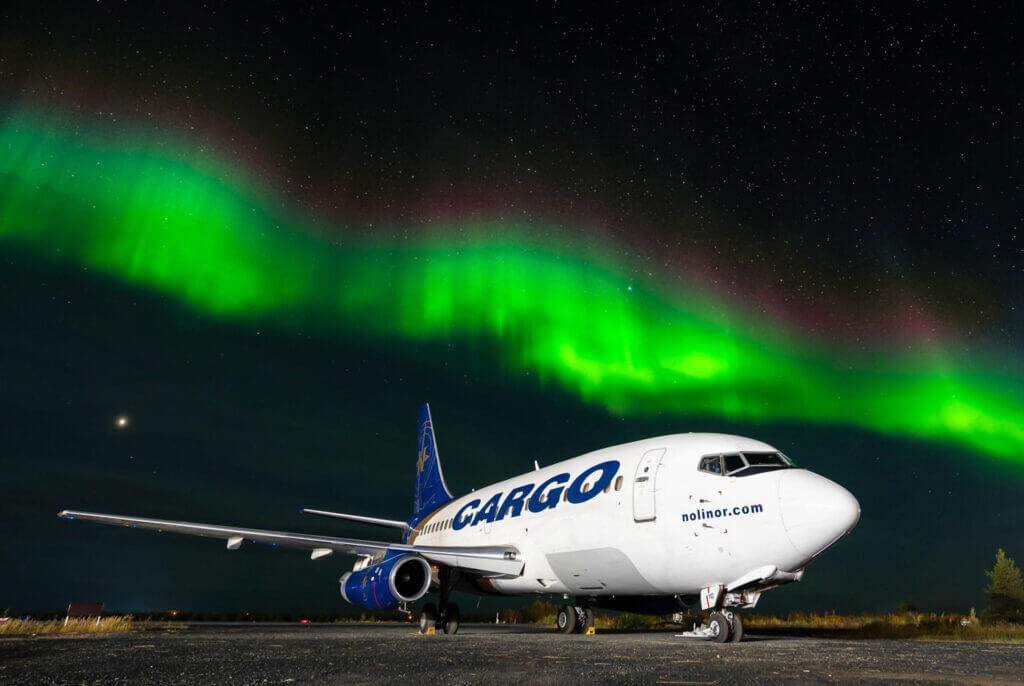
With 2023 behind us, Canadian cargo operators are looking to 2024 to bring new business opportunities. Some, like Buffalo Airways, are more insulated from economic factors than others. However, all of them are preparing now so they are ready to take full advantage of the next upswing in the global air cargo market.
